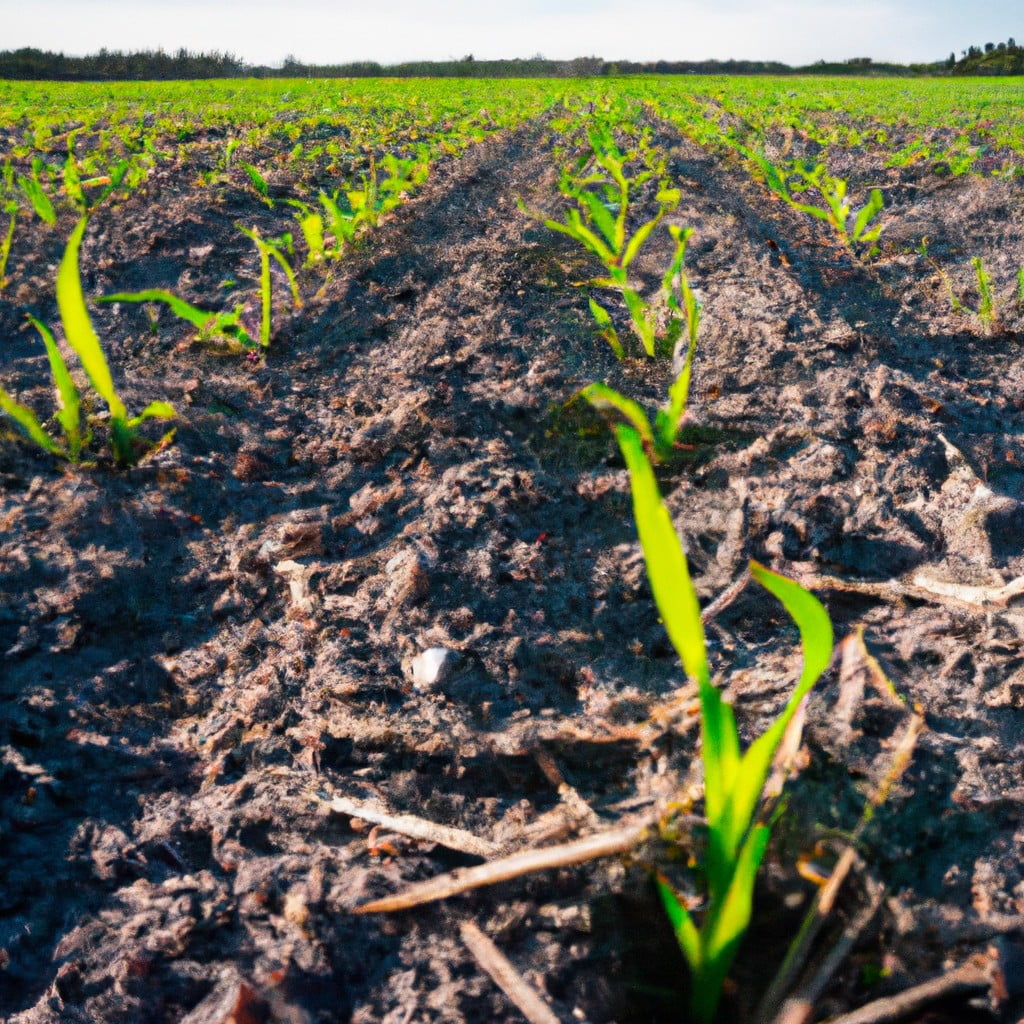Regenerative farming plays a pivotal role in sequestering carbon, aiding the fight against climate change by transforming farms into carbon sinks through natural and sustainable practices.
Regenerative farming plays a crucial role in sequestering carbon, a process that helps combat climate change. This method of farming enhances the soil’s capacity to absorb and hold carbon from the atmosphere by employing practices such as cover cropping, crop rotation, and organic fertilizers.
These practices not only enrich the soil but also increase its carbon content, effectively turning farms into carbon sinks. This article delves deeper into the mechanisms of carbon sequestration in regenerative farming, the benefits, and how it can be effectively implemented for sustainable agriculture.
Key takeaways:
- Regenerative farming enhances soil’s capacity to absorb and hold carbon.
- Techniques include cover cropping, crop rotation, and organic fertilizers.
- Carbon sequestration benefits soil health, resilience, and reduces greenhouse gas emissions.
- Regenerative farming can sequester up to 1.85 gigatons of carbon dioxide annually.
- Carbon sequestration in farming improves soil health, crop resilience, and has economic benefits.
Look Inside:
Understanding Regenerative Farming

Regenerative farming is a collection of farm practices designed to improve the health of agricultural ecosystems by enriching their natural reserves, especially soil quality. It encourages microbial diversity by forbidding the use of synthetic fertilizers and pesticides.
This system also champions ground cover year-round to prevent soil erosion and maintain nutrient levels, whether with cash crops, cover crops, or livestock grazing. Additionally, it prioritizes crop diversity and rotation as a strategy to break pest and disease cycles, reducing the dependency on synthetic chemicals.
By adhering to these fundamental principles, regenerative agriculture fosters productive and resilient farm ecosystems that can sequester large quantities of carbon.
The Science of Carbon Sequestration
Carbon sequestration is a natural or artificial process that captures and stores atmospheric carbon dioxide. Plants use photosynthesis to convert carbon dioxide into organic matter, such as sugars.
As plants mature and die, they decompose, and some of this organic matter is transferred to the soil, where it continues to store carbon. Microorganisms in the soil break down this organic matter, a process that ultimately releases carbon dioxide back into the atmosphere.
Such a process presents a unique opportunity for agriculture. Regenerative farming enhances this natural carbon cycle, increasing the carbon storage potential of the soil. These practices promote healthy soil rich in organic matter, effectively storing more carbon in the ground and reducing overall greenhouse gas emissions.
Advanced techniques such as cover cropping, crop rotation, and organic fertilizers amplify this effect, contributing to soil restoration and carbon sequestration.
Role of Carbon Sequestration in Agriculture
Agriculture has a symbiotic relationship with the carbon cycle. This process involves the capture and storage of carbon dioxide from the atmosphere in the soil – a technique vital for mitigating climate change by offsetting greenhouse gas emissions.
From enhancing soil fertility and productivity to improving soil’s resilience against weather extremes, carbon sequestration provides numerous ecological advantages. It also reduces reliance on synthetic fertilizers, lowering costs and minimizing the environmental impact.
Furthermore, it supports the natural ecosystem by maintaining soil biodiversity, contributing to healthy and productive agricultural land. Thus, incorporating carbon sequestration strategies in farming systems is not just beneficial but essential for a sustainable future.
Techniques Used in Regenerative Farming
The practical application of regenerative farming involves techniques designed to improve soil health and biodiversity. Incorporating perennials and cover crops plays a significant role in providing continuous soil cover and organic matter, which helps retain moisture and avoid soil degradation.
Crop rotation, including diverse range of species, nourishes the soil with varied nutrients, enhancing its fertility over time.
Furthermore, avoiding synthetic pesticides and fertilizers reduces detrimental effects on soil microbiology, encouraging the growth of beneficial soil organisms. Also, integrating livestock activities, when done sustainably, can contribute to manure that provides natural nutrients to the ecosystem.
These techniques not only keep the soil healthy, but they promote carbon storage, sequestering carbon dioxide from the atmosphere and mitigating the rising global temperature.
Collectively, the use of such practices help in achieving the twin goals of reviving soil health and combating climate change.
How Regenerative Farming Traps Carbon
Regenerative agriculture harnesses the power of photosynthesis to capture carbon dioxide from the atmosphere. The captured carbon dioxide is then broken down by plants into carbon and oxygen. The carbon forms part of the plant tissue and the oxygen is released back into the atmosphere.
When the plant dies, the carbon-rich plant matter decomposes and adds to the organic matter in the soil. Specific regenerative practices, such as cover cropping and crop rotation, help maintain a high level of organic matter. This results in a greater quantity of carbon being stored in the soil, increasing its capacity to act as a carbon sink.
Simultaneously, the application of organic fertilizers and minimal tillage augments the soil’s microbial activity, facilitating the transformation of dead plant matter into stable forms of soil organic carbon. Consequently, the soil’s ability to sequester carbon over time increases, having a positive effect on climate and soil health.
Estimates of SOC Sequestration Potential
Scientists project vast potential for Soil Organic Carbon (SOC) sequestration in agricultural lands globally. Research suggests that, with appropriate regenerative farming techniques, up to 1.85 gigatons of carbon dioxide could be absorbed annually. This extraordinary potential is achievable through practices such as compost application, conservation tillage, and cover cropping which increase soil carbon levels while enhancing overall farm productivity and resilience.
Notably, the potential will vary depending on local climates, specific farming practices, and soil types, emphasizing the importance of localized, context-specific strategies.
Case Studies of Carbon Sequestration in Farms
A study conducted by the Rodale Institute found that if global farms transitioned to regenerative agriculture practices, nearly 100% of annual carbon dioxide emissions could be sequestered. In another instance, a Minnesota-based organic farm documented a 33% increase in soil carbon levels over 27 years of using regenerative methods, contrasting with a neighboring conventional farm that reported no significant change in the same period.
Farmers in the Marin Carbon Project in California have also demonstrated success with regenerative practices. By applying a single layer of compost onto grazing lands, they were able to stimulate persistent carbon sequestration. These real-life examples provide concrete evidence of the substantial potential of carbon sequestration through regenerative farming.
Benefits of Carbon Sequestration in Farming
The benefits of carbon sequestration in farming go beyond climate change mitigation. When farmers adopt practices that sequester carbon, they improve soil health by increasing its organic matter content, leading to enhanced water retention and nutrient cycling.
This results in better crop resilience during dry spells and increased productivity. Furthermore, by storing more carbon, the soil emits fewer greenhouse gases, reducing the overall carbon footprint of the farm. The economic viability of the farm improves as well due to the reduced need for artificial fertilizers and other inputs, thanks to the enhanced soil fertility.
Additionally, these practices often promote bio-diversity, bringing a wider range of beneficial organisms to the farm and creating a more balanced, resilient ecosystem.
Moreover, policies are emerging to reward farmers for their carbon sequestration efforts, presenting additional economic incentives for sustainable farming. From climate mitigation to biodiversity conservation, carbon sequestration in farming reaps multiplicity of benefits that contribute towards agriculture sustainability.
Future Prospects of Regenerative Farming and Carbon Sequestration
As we look into the future, the adoption of regenerative farming has immense potential to mitigate climate change through enhanced carbon sequestration. Various models project that widescale transition could sequester significant global carbon emissions, providing a natural solution to reducing greenhouse gases.
Promising research indicates the capability of these practices to not just sequester carbon, but also improve crop yield, leading to better food security. Equipped with the right technology and policy support, farmers worldwide can amplify this effect, contributing hugely to sustainable farming goals. This promising trend offers a win-win: a resilient food system and a robust climate change strategy.
However, it’s important to consider that transitioning requires investment, training, and often, a complete overhaul of current farming practices. It’s critical that farmers receive the necessary support to adopt these methods, and current policies must evolve to incentivize regenerative practices.
While challenges exist, the prospects of regenerative farming for carbon sequestration, and thereby, climate change mitigation, are promising and paramount to our sustainable future.
FAQ
How does regenerative agriculture store carbon?
Regenerative agriculture utilizes the interplay between plants and soil microbes to extract surplus carbon dioxide from the atmosphere, storing it in plants and soils as a beneficial nutrient.
How much carbon does regenerative agriculture sequester?
Regenerative agriculture practices, particularly regenerative grazing systems, can potentially sequester up to 3.6 tons of carbon per hectare annually.
How does organic farming sequester carbon?
Organic farming sequesters carbon by utilizing natural soil amendments like compost, which boosts soil organic carbon by an average of 24%, according to scientific studies.
How is regenerative farming good for the environment?
Regenerative farming positively impacts the environment by sequestering atmospheric carbon dioxide, reducing erosion and water pollution through practices such as no-till farming and cover cropping, and subsequently enhancing soil health.
What methods do regenerative farmers use to increase soil carbon levels?
Regenerative farmers increase soil carbon levels by utilizing methods such as cover cropping, no-till farming, crop rotation, compost application, and planned grazing of livestock.
Can regenerative farming practices effectively offset global carbon emissions?
Yes, regenerative farming practices can effectively offset global carbon emissions by sequestering carbon in soil and vegetation.
How does the carbon sequestration rate of regenerative farming compare to conventional methods?
Regenerative farming practices sequester up to three times more carbon per acre annually than conventional farming methods.




